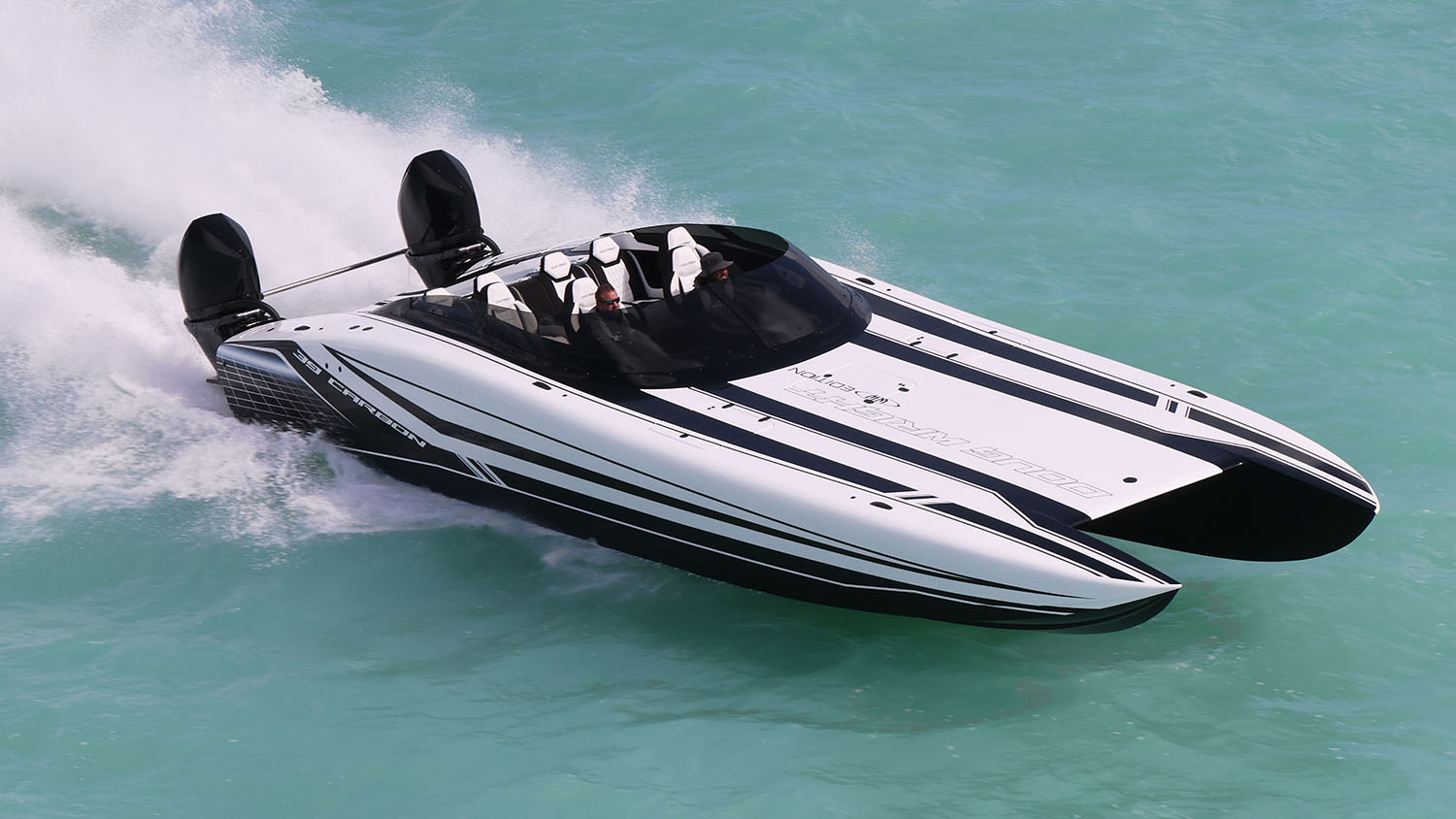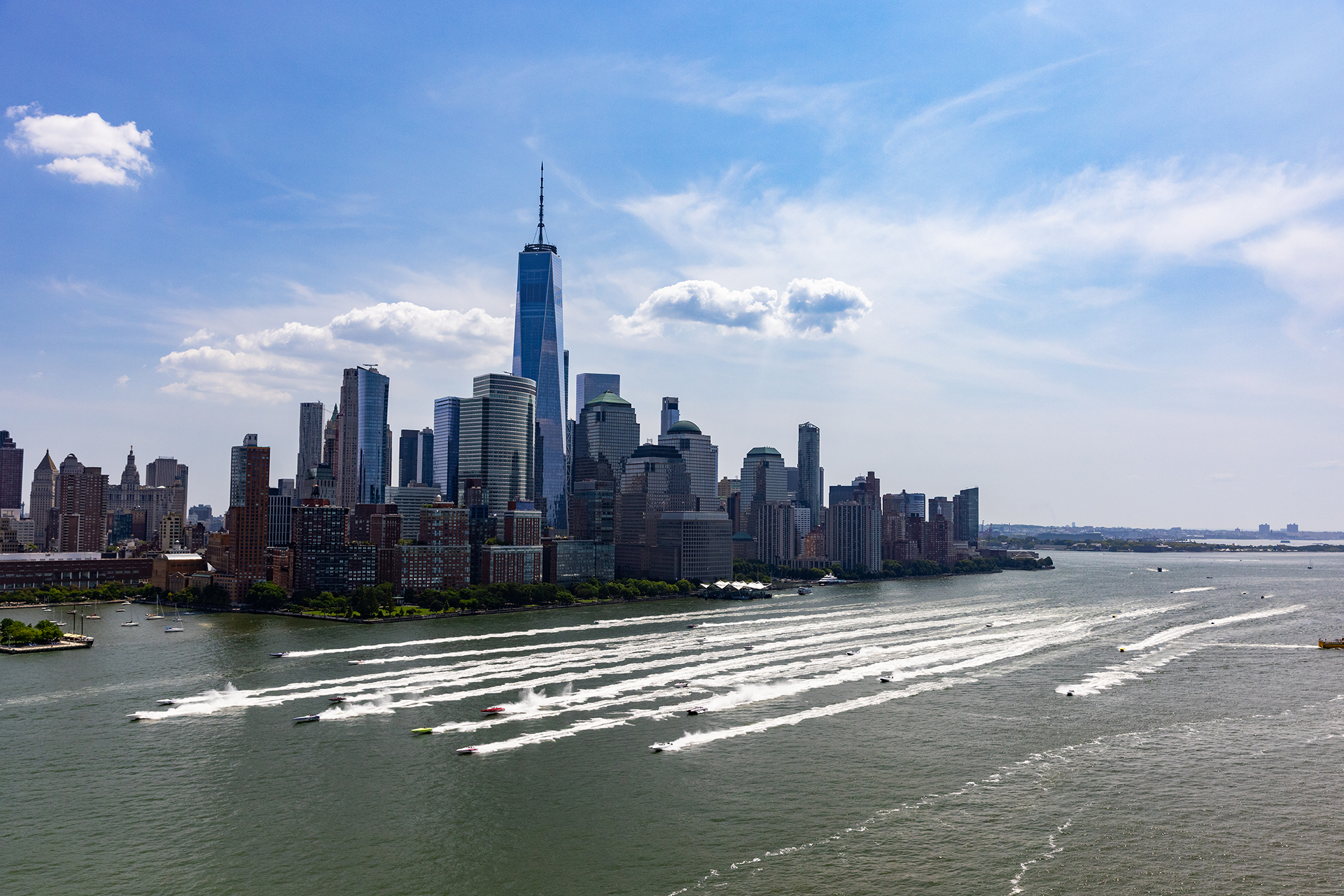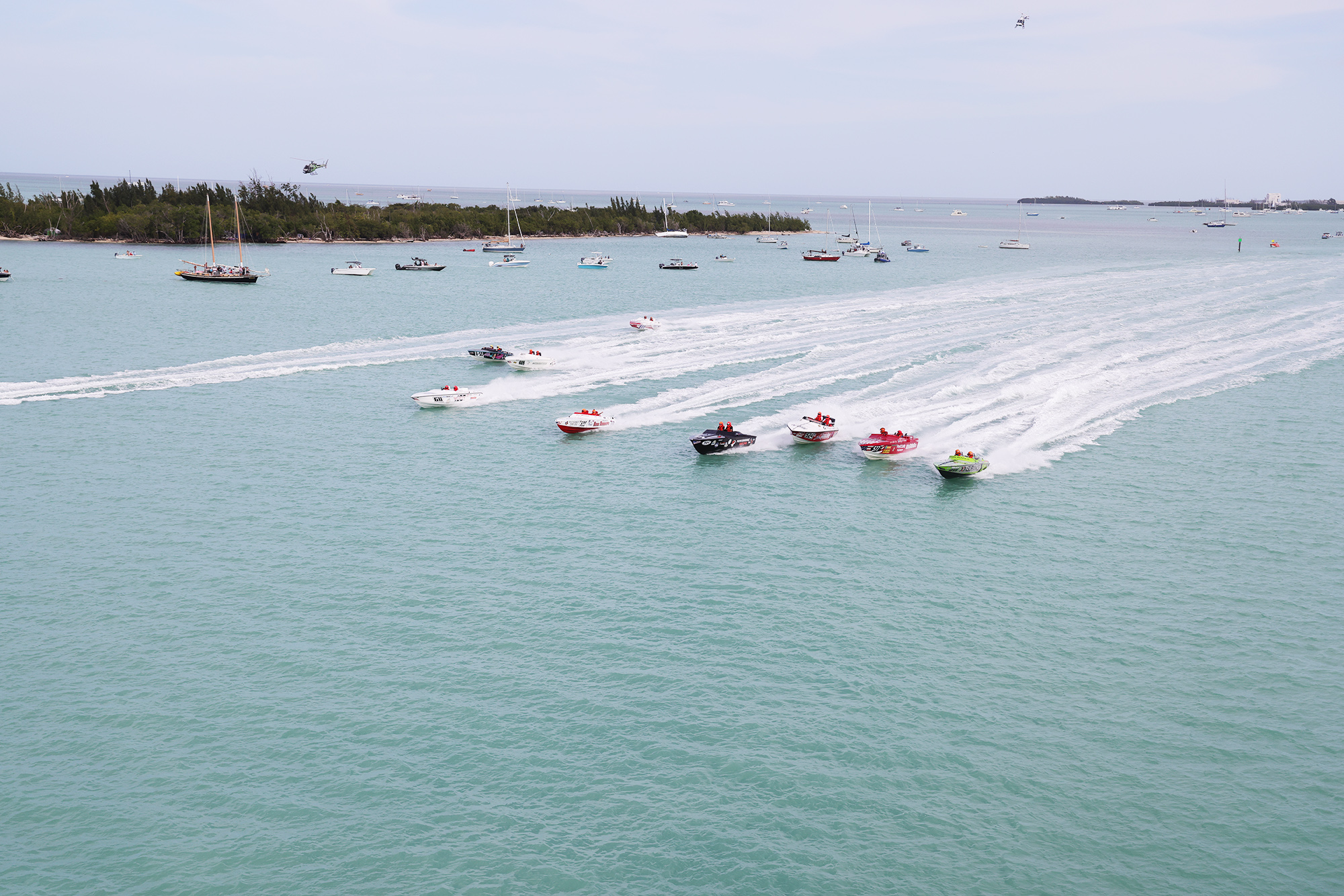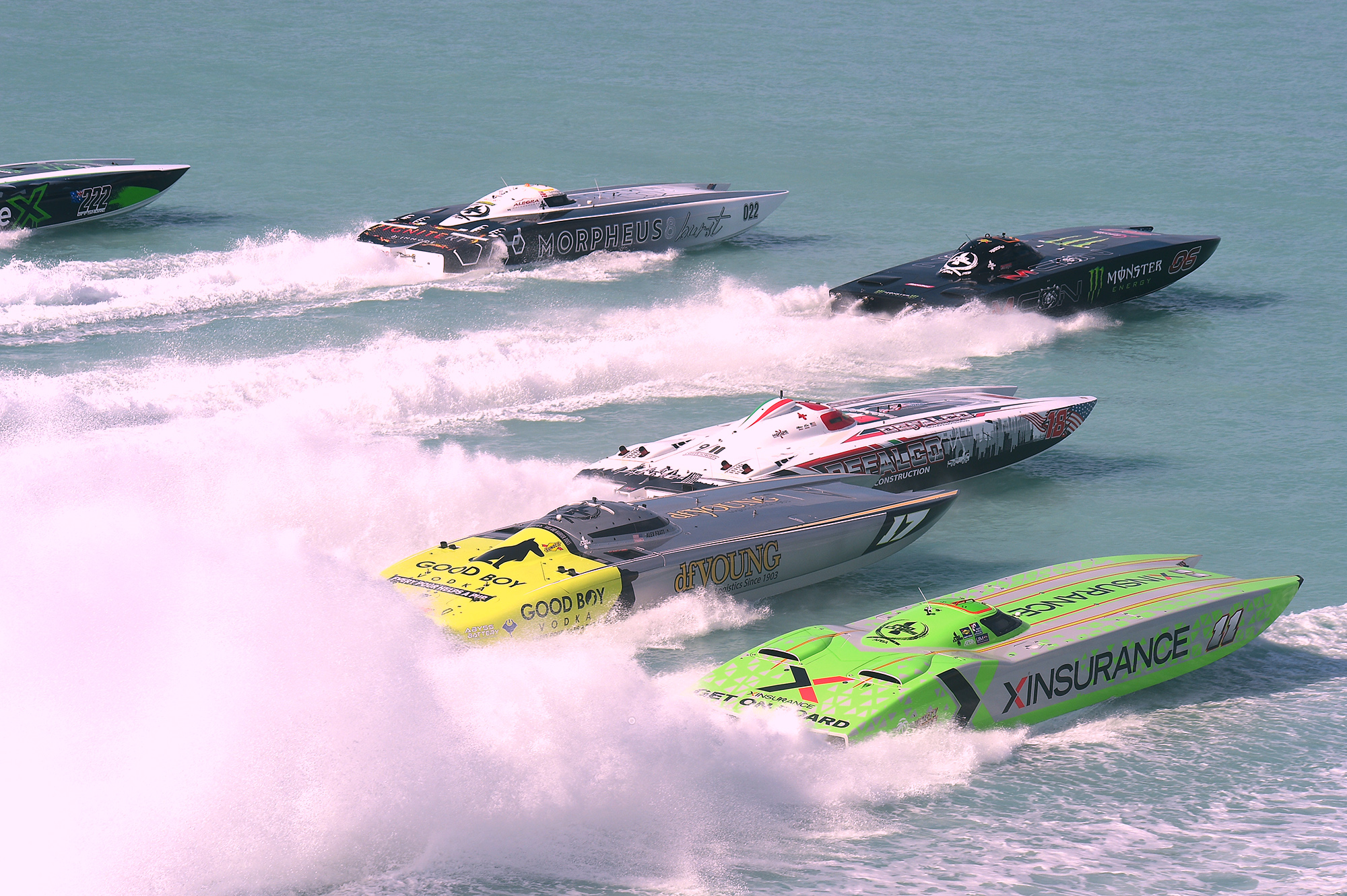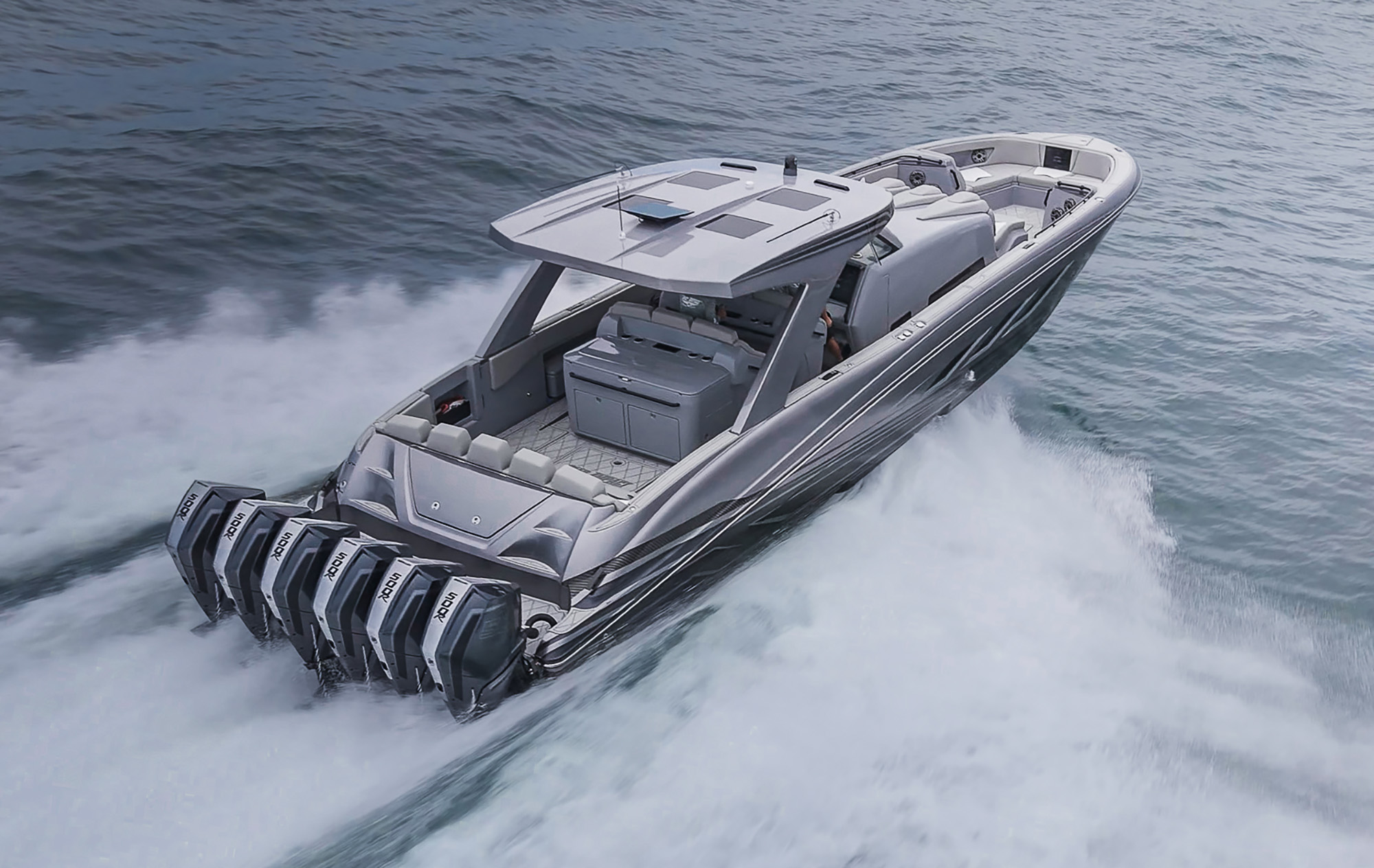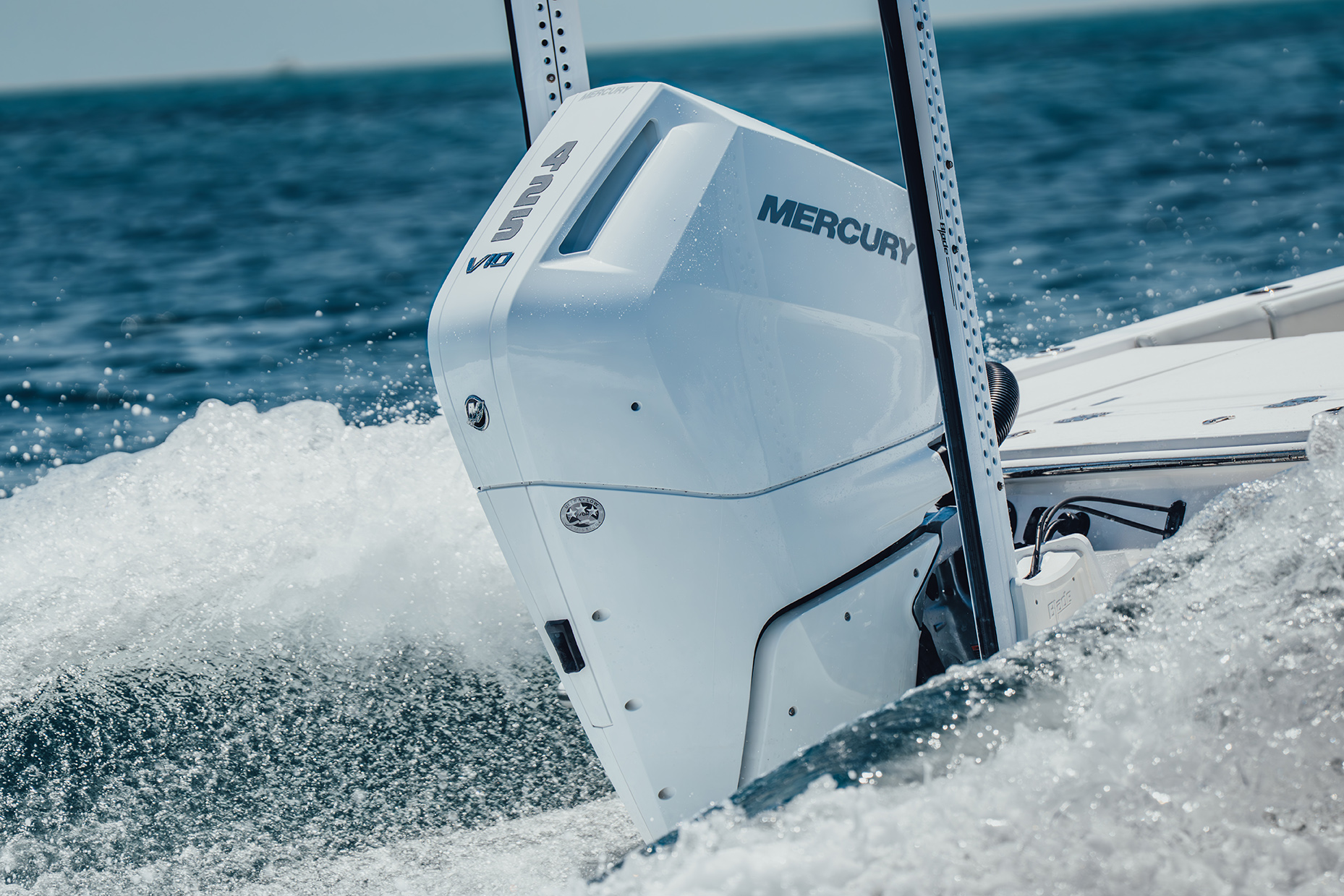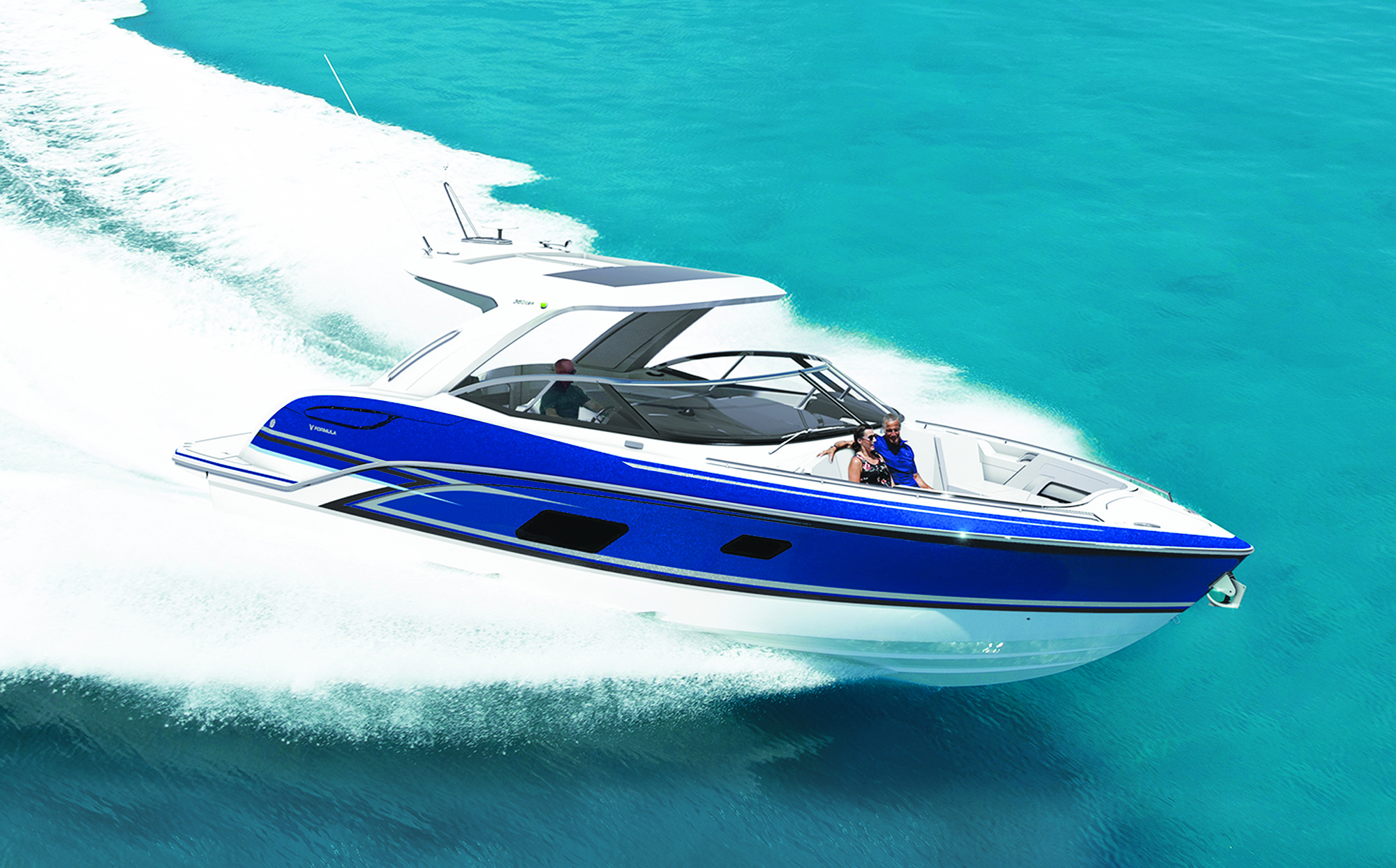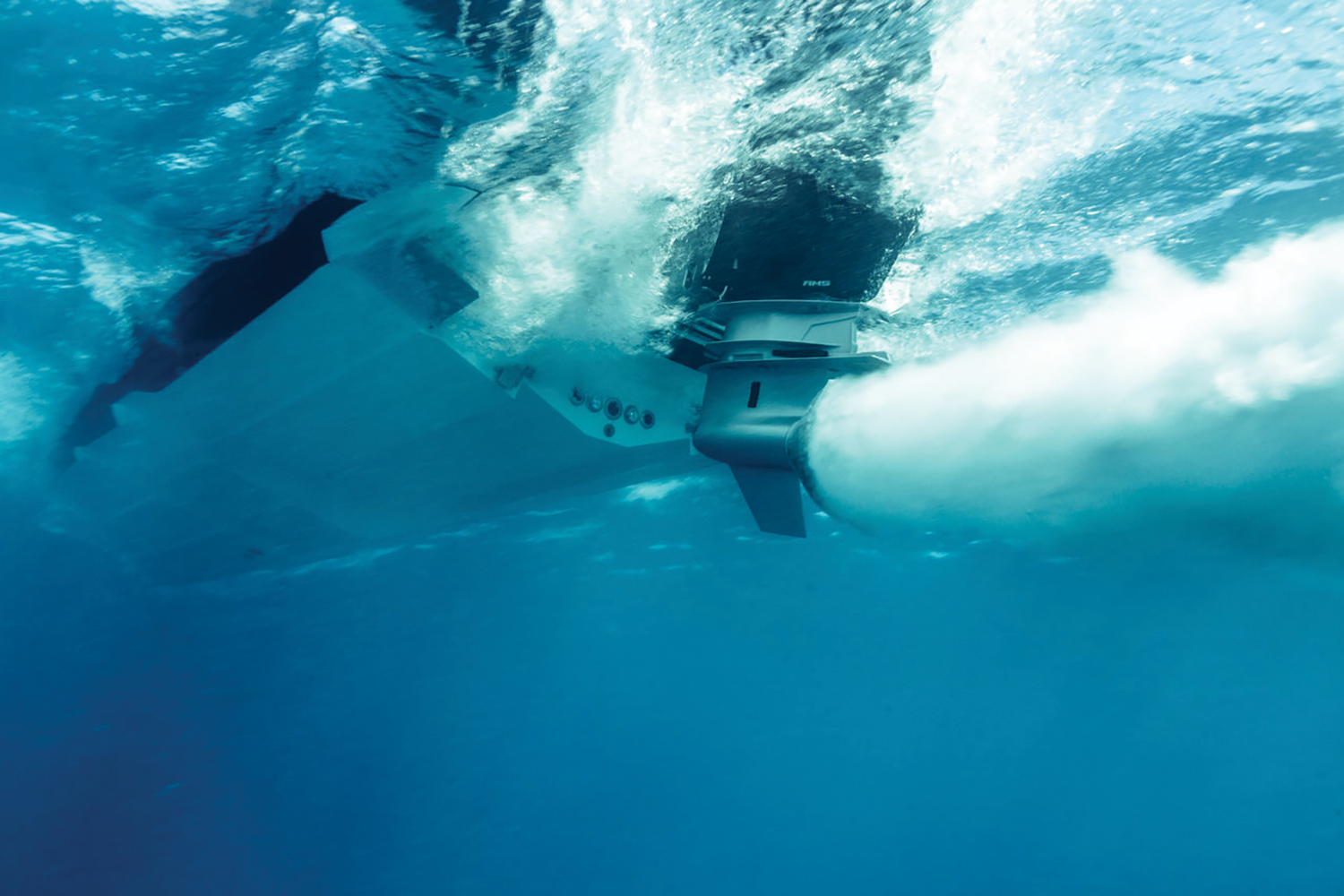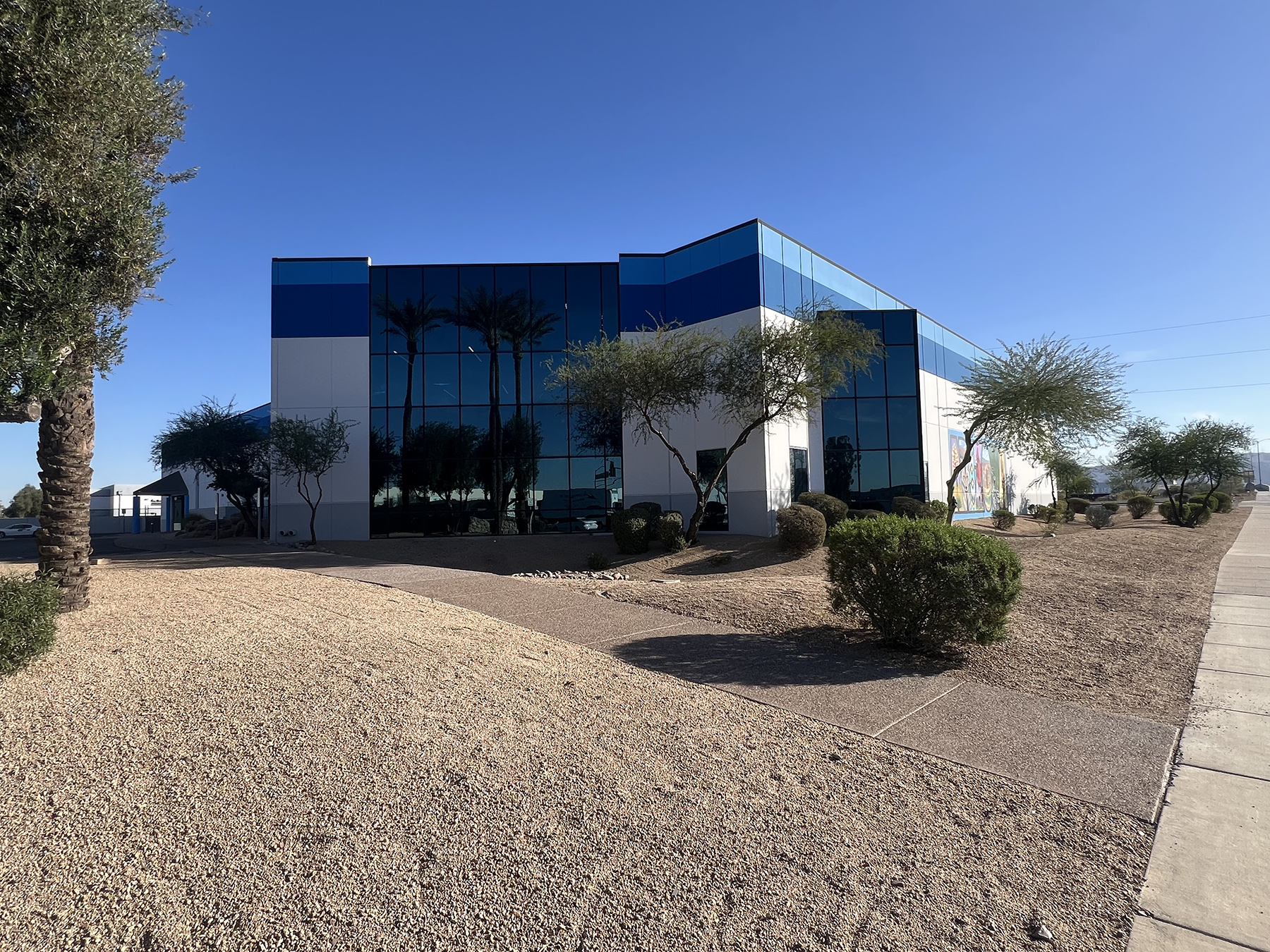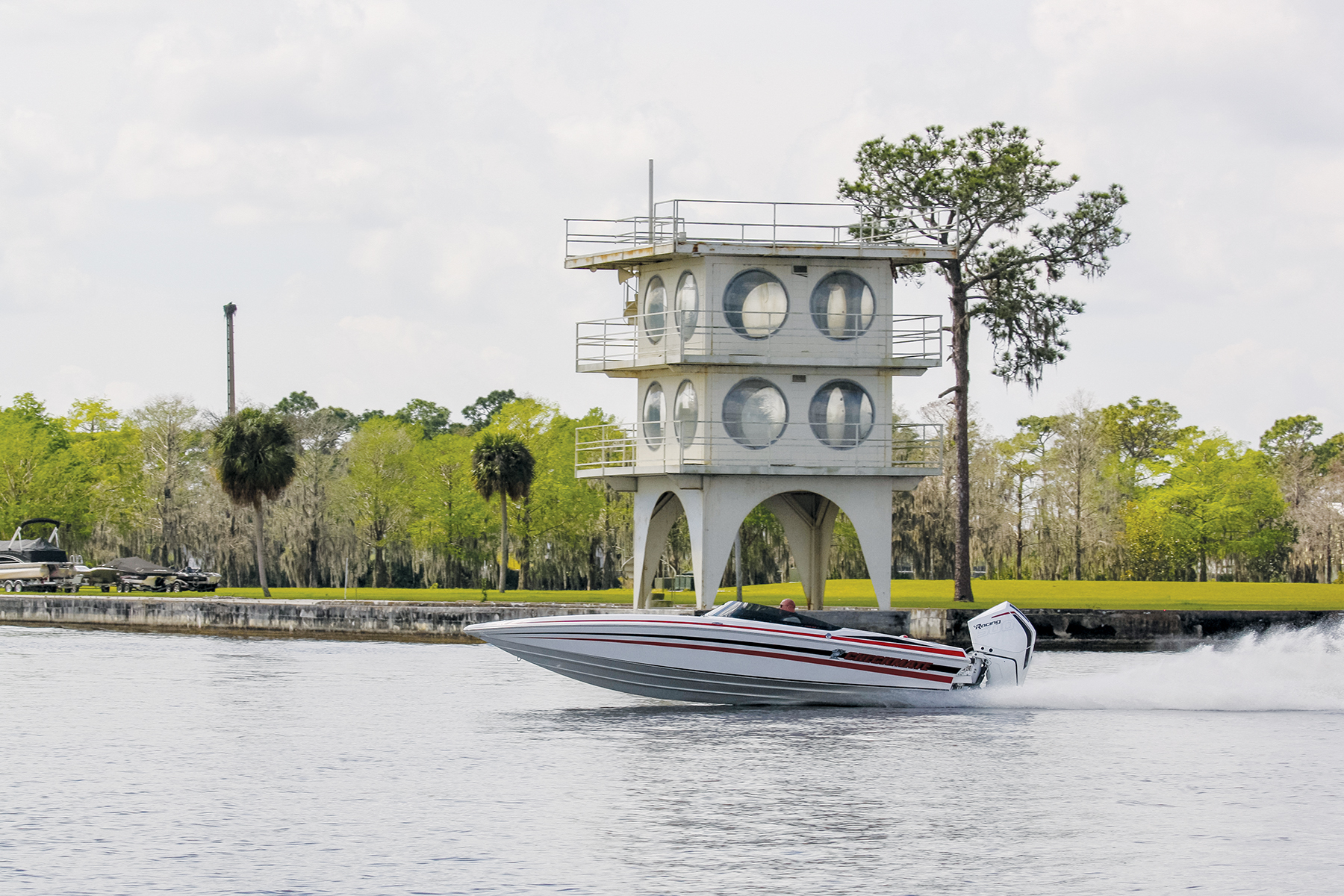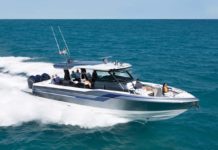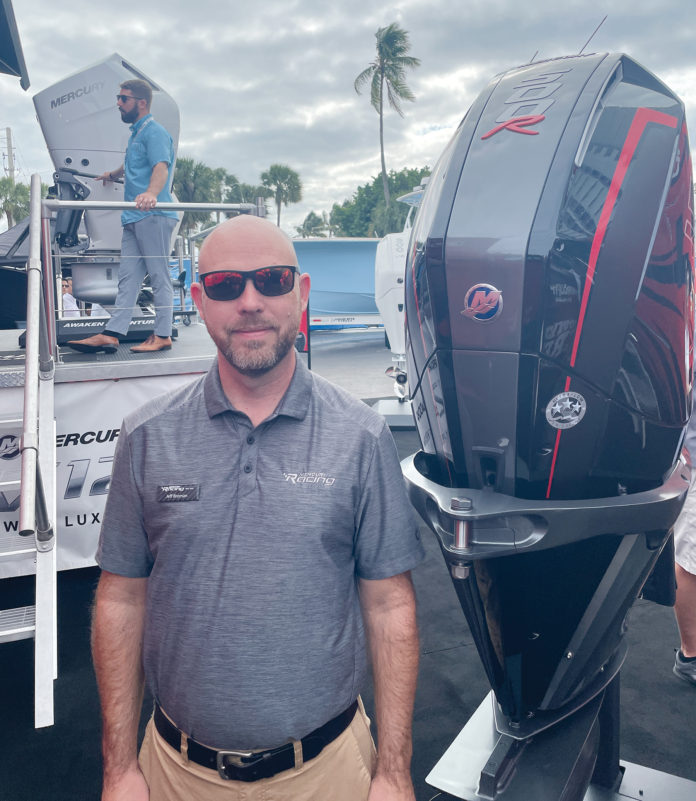Jeff Broman started at Mercury Marine as a college intern, now he’s running Mercury Racing.
By PRA’s Gregg Mansfield
It has been a whirlwind time for Jeff Broman since taking over as the director of Mercury Racing.
Broman moved into the job after a surprise shakeup at the Fond du Lac, Wis., company that saw the departure of two top executives. Broman served as Mercury Racing’s director of engineering for the past five years after previously spending 18 years at Mercury Marine.
The 45-year-old was destined to work for Mercury Racing. Growing up in Fond du Lac, both of Broman’s parents worked for Mercury Marine. While attending the University of Wisconsin to earn his mechanical engineering degree, Broman interned at Mercury Marine and was hired full time after graduating college.
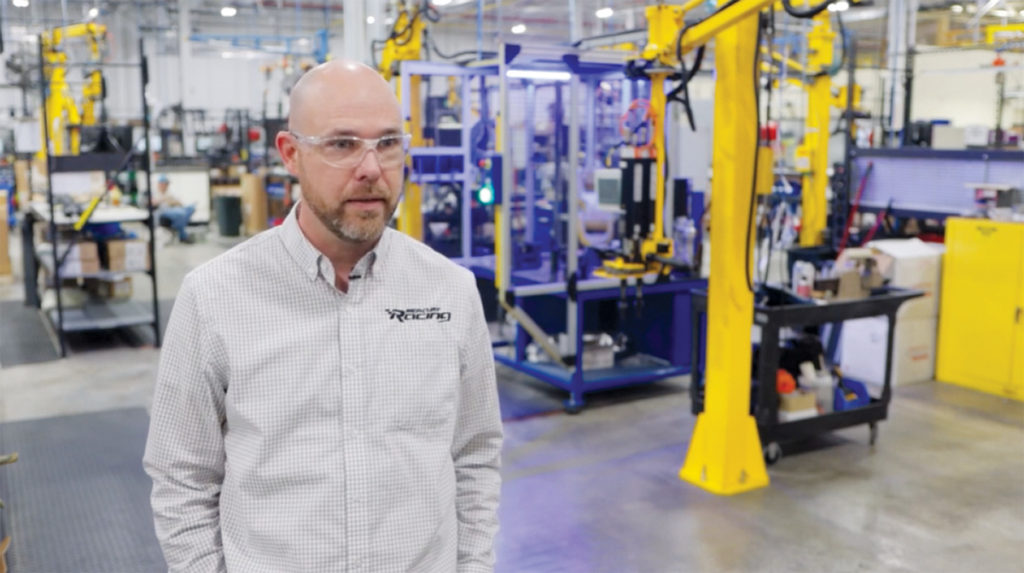
After joining Mercury Marine, Broman started working on two-stroke V6 outboards, moving onto the OptiMax and the Verado L6 platform. Broman’s hands are also on Mercury Racing’s 450R and 500R outboards that were introduced in 2023 as part of the company’s 50th anniversary celebration.
Poker Runs America caught up with Broman at the 2023 Fort Lauderdale International Boat Show. The questions and answers have been lightly edited.
What’s it been like stepping into the role of leading Mercury Racing?
Jeff Broman: I’ve been with Mercury for a long time, 23 years and five-plus at Mercury Racing, so I know all the people, I know the parts of the business that I’m responsible for now. I just need to learn them in more detail. Everybody’s been extending their help to me. It’s been a lot to learn, but the stress level is pretty low. It’s been good.
Did you start with Mercury Marine right out of college?
JB: I actually interned in engineering while I was in college and then right after I graduated, I knew Mercury was where I wanted to be. I came right into engineering, started working on two-stroke V6 outboards, worked on the OptiMax, the L6. Pretty much all the four-stroke outboards that we’ve done in the last 20 years I’ve worked on.
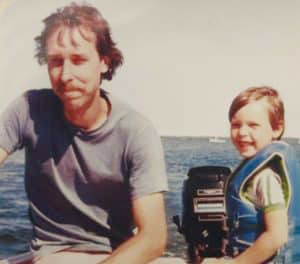
Were you a gearhead growing up?
JB: I was always interested in cars and engines and then we were boaters, too, so my parents always had a boat. I grew up going out on the water and on the weekends tubing, skiing, and fishing. That’s in my DNA, that’s what I did growing up.
The previous leaders of Mercury Racing had engineering backgrounds. Why are engineers suited to running Mercury Racing?
At the end of the day, Mercury Racing and Mercury Marine, we’re a technical product company. Not every president of Mercury has been an engineer, but a lot of them have. That technical expertise is really important to have in our management team, so we know how to get this stuff done.
The core of engineering is a lot of problem solving. You can take those core values to learn in engineering, you can apply them to finance, you can apply them to marketing, you can apply them all over the place. I think that’s part of what makes engineers well suited to those kinds of positions.
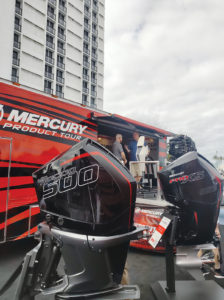
With the recent changes, there is a concern that Mercury Racing will be absorbed into Mercury Marine and no longer be a standalone organization. Can you address those concerns?
JB: I understand the rumor and the thinking from the outside. But we work differently, we do product development differently, we work with a different set of suppliers, low volume, specialized production.
It just takes a different way of doing business than the main plant (Mercury Marine). The main plant is all about high volume. Very high quality but high volume. We play in a much smaller arena, we tend to have faster product turn, and we’re just much more specialized.
There will always be opportunities (to collaborate) and looking for those opportunities to make our groups more efficient but at the same time there’s a recognition that there will never be 100-percent alignment between how Mercury Marine works and how Mercury Racing works.
Mercury Racing had a lot of new products come out in 2023 to celebrate its 50th anniversary. What will we see from the company next year?
JB: The 500R project was huge for us and the 400R too. What you see next year won’t be that level of magnitude, we’ll have some smaller projects that will fit in there. The longer projects might be two years, three years in the making. The 500R we started working on shortly after we launched the 450s. It’s a long time to get those kinds of projects into production.
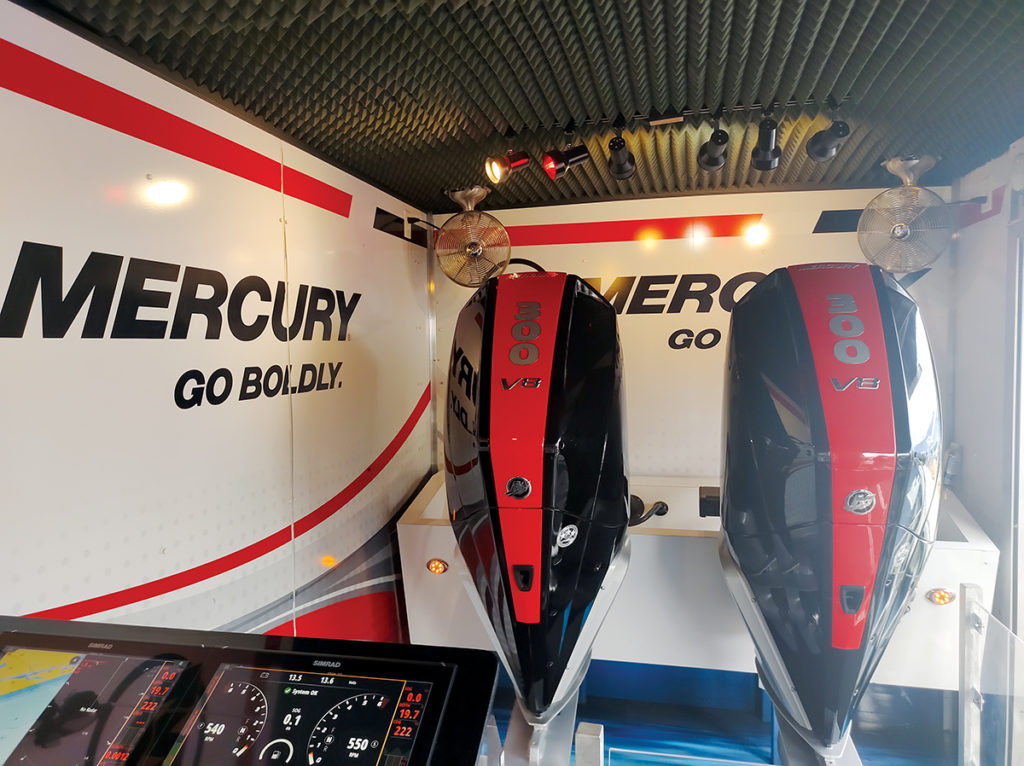
How has Mercury Racing done working through the backlog of orders since the pandemic?
JB: For most of the products, we’ve worked it down now that the availability is pretty good. The exception is probably the V10s right now. The V10s have the longest lead time. That’s a new line, it’s a new system that’s getting up to speed. Obviously, a lot of demand for it because it’s the hottest motor out there right now. If you get to the V8 product right now, the lead times are much, much shorter than they were 12 months ago.
What’s the status of the plant expansion for Mercury Racing?
JB: I would say we’re 95 percent complete with our facility expansion. The building itself is done. We’ve moved a lot of products into the new building. Now we’re shuffling stuff around in the old part of the building, getting that cleaned up and a fresh coat of paint.
We moved the 500R line, so where the 500R line was two months ago (August 2023) is empty because that’s getting stripped, cleaned, repainted and then we’ll move some product back and set up the facility. It should be in its final configuration by year’s end.
That’s one of the things that we do with the Mercury Racing facility that’s a little different is we don’t drill stuff into the ground. We set the lines up to be super flexible, so we can move stuff around and flex products in and out pretty easily.
As we bring new products on, we can move stuff around and make room for new products. As old products go end of life, we can move new things into those spaces. The facility, by design, is very flexible.
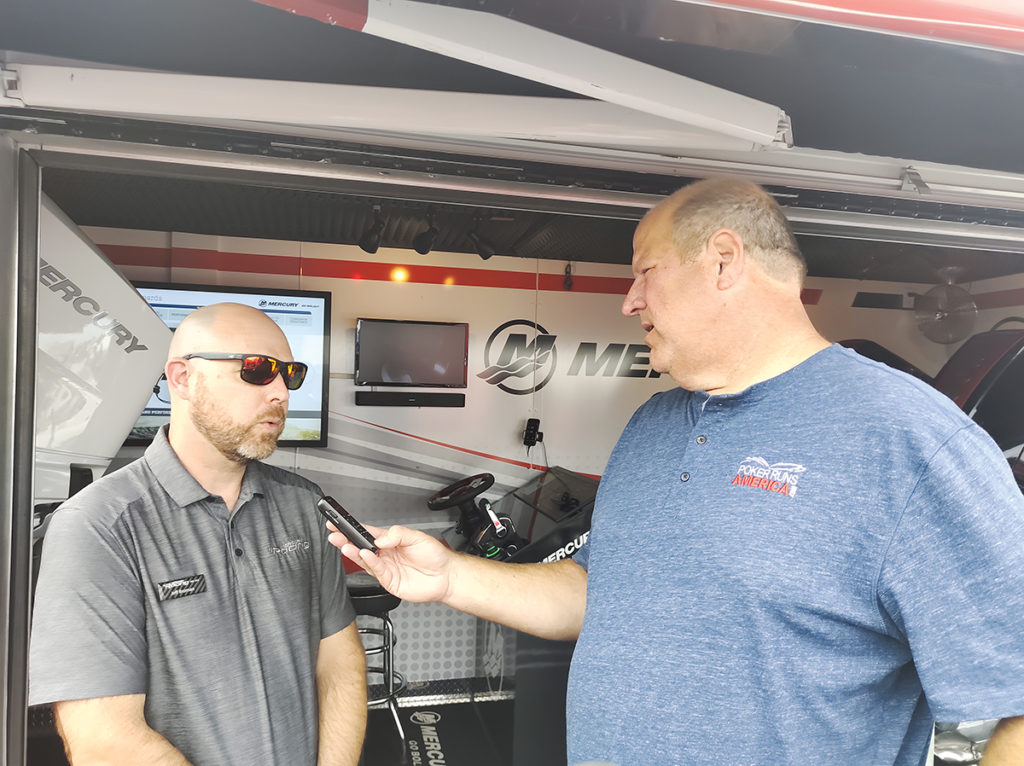
Do you foresee Mercury Racing continue its involvement in racing, specifically offshore racing?
JB: Racing is obviously a part of our business, it’s an important part of our heritage. It has tangible benefits for us going forward. It’s part of the brand, makes people aware of what we do and who we are. It’s a really good opportunity for us to find the weak links in our product.
Racers go out and they use and abuse product like nobody else, so they find stuff that we never knew was there. It’s an opportunity for us to harden our products, learn from what they’ve learned, and make our consumer products better. It’s a really great way for us to develop people, putting engineers and technicians under the pressure of a race weekend. You get really creative, you learn how to think on your feet and make decisions.
For those reasons, we’ll continue to be involved in competition. That’s the plan.
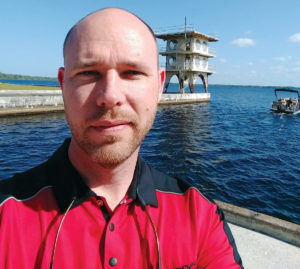
Stock 450 has developed into a good class for offshore racing. With the release of the Mercury Racing 500R over summer 2023, what direction do you see Stock 450 going?
JB: The 450 class kind of came out of nowhere a couple of years ago, and it started small. MTI was there for the first couple of years, now Doug Wright is building boats for the class. There are others building boats for the class, as well, so that class is going to keep growing.
We’ve been having those conversations with the builders, with the people running in that class to say, “What’s the right transition plan to move from the 450 to the 500?” We’re still working through the details of that, but what we’ll try to do is as orderly a transition as possible. You don’t really want to have a mix of 450 and 500 boats out there because that can get messy. The cleanest way to do it will just be to transition from one season to the next.
I don’t think that’s going to happen for next season, probably more like 2025. That’s my guess right now.
Do you see the sterndrive market rebounding, or will outboards continue to dominate the market?
JB: That’s a really tough question. Do I see it coming back? Possibly. To the level it was 10 or 15 years ago? Probably not. The outboards just have so many customer-facing advantages, I think people have realized that.
There will always be a place for the performance sterndrives. There will be boats that just don’t make any sense with outboards, and they’ll stay sterndrive. At least for right now, I don’t see it ever getting back to the way it was.
Will Mercury Racing maintain its line of sterndrives?
JB: Absolutely. The QC4v is a huge part of our product line from a heritage standpoint and it’s the pinnacle of what we do from an engineering standpoint. It’s not going away. That’s one of the things looking forward to our product development plan is what’s next for QC4v. It’s going to stay a core part of our lineup for years to come.



